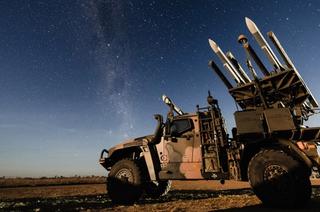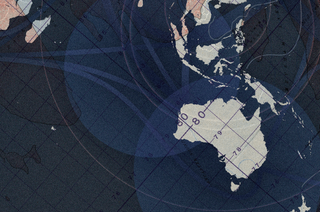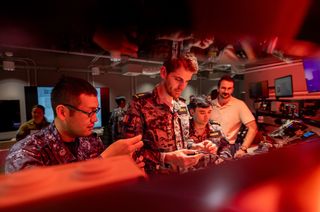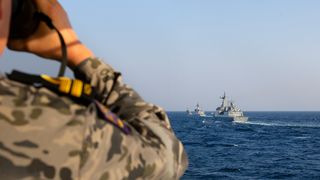Executive summary
- Shared values and interests underpin the Australia-South Korea relationship but differences in strategic priorities have historically hindered opportunities for deeper cooperation. Reconciling these differences will be essential for making headway on an increasingly ambitious defence and security agenda.
- Over the past 15 years, Australia and South Korea have established much of the necessary institutional and legal architecture to enable greater bilateral defence cooperation. The challenge is now to operationalise the partnership and demonstrate its value proposition to the region within the bounds of both countries’ capacity constraints.
- Minilateral security arrangements may provide the most effective means for giving greater expression to bilateral defence and security cooperation. At the same time, these groupings will only be as strong as the Australia-South Korea relationship.
- Australia and South Korea’s defence industrial and technology cooperation faces stiff headwinds, though there remain promising opportunities for collaboration on defence supply chain resilience; distributed maintenance, repair and overhaul capabilities; and defence technology cooperation, including through AUKUS Pillar II.
- Experts are uncertain whether recent policy changes and international actions taken by the DPRK signal a lasting shift towards a more forthright approach to its regional and global security role. Though certain to negatively impact inter-Korean dynamics, it is less clear how these developments might impact the Indo-Pacific strategic environment or balance of power.
- Likewise, though experts speculated over the potential strategic gains and losses that the Russian Federation stood to reap from deeper cooperation with the DPRK, there was no consensus on the strategic implications of that partnership for Australian-ROK cooperation.
- Experts agreed that maritime Southeast Asia provides a natural theatre for South Korea and Australia to further their defence and security cooperation. This could include better coordinating and deconflicting their respective capacity-building activities, pursuing joint capacity-building and maritime domain awareness programs with priority regional partners, and practically supporting one another’s maritime presence deployments.
- Both Australia and South Korea remain uncertain about how the return of Donald Trump as President of the United States will affect their respective alliances and regional security more broadly, but agree on the need for their two countries to work together more closely on defence and security issues than ever before.
- Amid the deteriorating regional strategic environment and China and North Korea’s growing conventional and nuclear capabilities, Australia and South Korea are being forced to confront difficult and unique questions over the future of US extended nuclear deterrence in Asia, and the ramifications of these trends for their respective alliances with Washington.
Background
For the best part of two decades, the Republic of Korea (ROK or South Korea) and Australia have progressively laid the foundations for a deeper and more robust defence and security relationship, underpinned by shared values and a strong preference for preserving a rules-based regional and global order.1 In many ways, Australia is South Korea’s most important strategic partner aside from its alliance with the United States. Since issuing the Joint statement on enhanced global & security cooperation in March 2009,2 Seoul and Canberra have held biennial ‘2+2’ meetings between their foreign and defence ministers since 2013, established Strategic and Indo-Pacific Dialogues between their senior officials, and upgraded their bilateral relationship to a ‘Comprehensive Strategic Partnership’(CSP) in 2021. Indeed, Australia is one of only three countries with which the ROK holds a CSP and 2+2, besides Canada and the United States, reflecting the unique nature of the relationship. Joint ministerial statements have progressively articulated a more robust foundation for cooperation, underscoring the countries’ shared democratic values, the complementary nature of their trade-dependent maritime economies, as well as their strong commitment to supporting and working with the United States. Crucially, the two countries have also identified a growing interest in promoting wider regional stability and security through enhanced defence cooperation.
It is significant that the deepening of the South Korea-Australia relationship has coincided with the emergence of the Indo-Pacific region as the main arena for strategic competition between the United States and the People’s Republic of China (PRC). The culmination of various crises and increased tensions has driven the Australian and South Korean governments to release strategic and national defence documents, both of which articulate a clear and mutual interest in preserving a stable and prosperous Indo-Pacific regional order. Australia’s 2024 National Defence Strategy called for a generational investment in the country’s defence, commensurate with Canberra’s commitment to playing its part in an increasingly multipolar region characterised by a more diffuse balance of power.3 South Korea’s inaugural Indo-Pacific Strategy, released in December 2022, attested to its increasingly outward-looking foreign policy and vision for a “free, peaceful and prosperous Indo-Pacific region,” including a more proactive contribution to regional stability.4 Coupled with the Yoon Suk Yeol administration’s ambition for South Korea to become a responsible “global pivotal state,” with its foreign policy focus less constrained to the traditional confines of the Korean Peninsula, these developments have breathed new life into the bilateral relationship as the two middle powers navigate great power-centric regional dynamics and the emergence of an increasingly multipolar regional order.
Australian and Korean officials and experts will need to engage in more frequent, frank discussions about their countries’ respective national and regional security priorities if the two countries are to give greater operational expression to their defence relationship.
Yet much work remains to be done to fully deliver on the potential that both governments and many scholars have long identified in the bilateral relationship.5 This is especially true with respect to defence cooperation. On paper, Australia and South Korea may seem natural regional security partners, yet efforts to develop more impactful patterns of defence engagement have proceeded slowly due to differing strategic circumstances and priorities, political sensitivities, risk thresholds, and/or capacity limitations. Though these constraints have begun to loosen, Australian and Korean officials and experts will need to engage in more frequent, frank discussions about their countries’ respective national and regional security priorities if the two countries are to give greater operational expression to their defence relationship.
In that spirit, the Embassy of the Republic of Korea in Australia and the United States Studies Centre co-hosted a Track 1.5 dialogue on Security Cooperation in Canberra, Australia, in November 2024, convening over 50 government officials and researchers for discussions about the defence and security issues animating the bilateral relationship. This dialogue, held under the Chatham House Rule, sought to address the challenges to and opportunities for advancing greater security cooperation amid a deteriorating regional strategic environment. The following outcomes report outlines nine key takeaways from those discussions, identifying points of consensus and difference between Australian and Korean participants, emerging opportunities for collaboration, unanswered questions and discussion points worthy of further exploration.
It is important to note that this dialogue was conducted approximately one week before the events of 3 December 2024, when South Korean President Yoon Suk Yeol declared and repealed emergency martial law within a matter of hours. Though the subsequent political crisis in Seoul has raised questions for many analysts, including those in Australia, over South Korea’s near-term foreign policy trajectory, the authors believe that this dialogue’s key findings will remain relevant to the future of the bilateral strategic partnership irrespective of how the political situation in South Korea is ultimately resolved.6
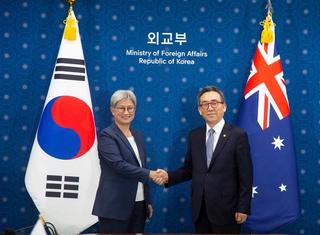
Outcomes
1. Shared values and interests underpin the Australia-South Korea relationship but differences in strategic priorities have historically hindered opportunities for deeper cooperation.
- The Australia-South Korea partnership is underpinned by several foundational shared interests and values. Both countries are increasingly capable maritime middle powers with a deep and enduring alliance with the United States. They share an interest in securing critical sea lines of communication, upholding key elements of the international rules-based order (specifically in the maritime domain concerning United Nations Convention on the Law of the Sea — UNCLOS) and deterring unilateral changes to the status quo across the region, including on the Korean Peninsula. These shared interests are reinforced by other common factors, including respect for liberal democratic values, complementary market-based and maritime-dependent economies, and strong people-to-people ties.
- Yet, these factors alone have been insufficient to drive a more robust bilateral defence and security cooperation agenda beyond Northeast Asia. Granted, the Democratic People’s Republic of Korea (DPRK) nuclear ambitions and hostile behaviour have historically driven Australia-ROK defence engagement bilaterally, through the United Nations Command, and in support of regional sanctions enforcement and non-proliferation initiatives. However, there is a risk that the Australia-ROK defence relationship could stagnate if it does not evolve to address wider regional security challenges beyond the Korean Peninsula and Northeast Asia. Several participants on both sides expressed concern that a failure to modernise the defence relationship for the new strategic context in the Indo-Pacific could produce expectation gaps between Australia and South Korea, and put at risk the newfound alignment of strategic outlooks between the two countries.
- This is not to say that Canberra does not have deep interests and a role to play vis-à-vis North Korean issues. Indeed, Australia has an abiding interest in stability on and around the Korean Peninsula, serving as an important member of the United Nations Command, providing an Australian Defence Force contribution to support the inter-Korean peace process through Operation Linesman, as well as consistently contributing to international non-proliferation and sanctions enforcement initiatives targeting North Korean violations. Yet recent strategic documents have identified the Eastern Indian Ocean, littoral Southeast Asia and the South Pacific as Australia’s primary areas of strategic interest, with the precise place of the Korean Peninsula in Australia’s overall strategic outlook comparatively unclear.
- For understandable reasons, South Korea’s foreign policy outlook has historically been dominated by the omnipresent threat of the DPRK and broader strategic dynamics in Northeast Asia. However, this has meant that Seoul’s engagement with regional security issues across the wider Indo-Pacific has been inconsistent, notwithstanding the Moon Jae-in administration’s 2017 New Southern Policy and, more recently, the Yoon Suk Yeol administration’s 2022 Indo-Pacific Strategy, including a growing willingness to discuss sensitive regional security issues in the South China Sea and the Taiwan Strait. Nevertheless, Seoul’s prioritisation of North Korean issues has limited opportunities for Australia and South Korea to collaborate beyond the latter’s immediate region of interest, illustrated by the fact that the relationship’s single bilateral military exercise, Haedoli Wallaby, has never taken place in or around Australia.
2. Over the past 15 years, Australia and South Korea have established much of the necessary institutional and legal architecture to enable greater bilateral defence cooperation. The challenge is now to operationalise the partnership and demonstrate its value proposition to the region within the bounds of both countries’ capacity constraints.
- In addition to the biennial defence and foreign ministers’ ‘2+2’ meetings, Australia and South Korea have established a range of senior official level dialogues and inter-service engagements to build greater familiarity between one another’s defence establishments; signed a Memorandum of Understanding on defence matters in 2011 and a blueprint for Blueprint for Defence and Security Cooperation in 2015, pertaining to intelligence sharing, logistics support and defence industry cooperation among other issues; conducted the bilateral Haedoli Wallaby anti-submarine warfare exercises since 2012, and staged an inaugural land forces exercise in October 2024.7
- However, more needs to be done to complete this architecture and to give it greater practical — rather than simply political — expression if it is to make a positive contribution to wider regional security. For instance, recent official-level commitments to explore an enduring reciprocal defence cooperation framework come on the back of over a decade of Australian efforts to drive a conversation about such a mechanism.8 Notwithstanding limited trilateral military exercises with US and Korean forces,9 Australian and South Korean air forces lack a dedicated bilateral exercise format to build their interoperability, while the operational scope of bilateral naval and army engagements remains limited. The circumscribed scope of real-world defence cooperation, particularly outside of Northeast Asia, has also meant that the limits of existing enabling agreements and mechanisms have yet to be fully tested, particularly in contexts where Australia does not have UN Command logistics and access arrangements to fall back on.
- Nevertheless, participants were buoyed by the prospects of greater regional defence and security cooperation. Australian experts were supportive of South Korea’s recent pledges to step up its defence and security engagement in Southeast Asia, though noted that questions remain over the role Seoul sees for the ROK Navy and Coast Guard in implementing its Indo-Pacific Strategy. Korean experts underscored prospects for cooperation on naval maintenance, repair and overhaul (MRO), including potential projects with key Southeast Asian partners, such as the Philippines; the potential for joint maritime cooperative activities with Japan, the Philippines and the United States; and enthusiasm for negotiating new arrangements similar to a Status of Forces or Reciprocal Access Agreement between Australia and South Korea.
- Participants from both countries noted that while South Korea and Australia possess significant potential to shape the regional strategic environment, their limited capacity and resource constraints meant that it would be important to be deliberate in identifying forms of cooperation with the greatest mutual buy-in and prospects for success. This, they noted, is important to ensure that the relationship is not stretched too thinly by an over-saturation of workstreams, something which has previously contributed to an expectations gap between the policy communities in both countries over the role and potential of the relationship. Leveraging the two countries’ respective strengths and shared interests more effectively will likely require a sharper focus on identifying where the most mutually productive avenues for cooperation lie in the relationship.
3. Minilateral security arrangements may provide the most effective means for giving greater expression to bilateral defence and security cooperation.
- Australia and South Korea are committed to furthering their own bilateral strategic partnership and leveraging multilateral forums (including ASEAN and the Pacific Islands Forum) to advance their shared interests. Yet, participants tended to agree that minilateral security partnerships offer the best opportunities for giving greater practical expression to Australia-South Korea defence cooperation. Given both countries’ limited diplomatic, financial and military resources, participants agreed that leveraging existing and emerging minilateral security groupings could provide a viable means of enabling new forms of bilateral engagement cooperation, and of amplifying the effects of the two countries’ independent and combined efforts to shape the regional strategic environment.
- As precedent, experts and officials alike pointed to the growing ‘latticework’ of multilateral military exercises featuring Australian and South Korean forces alongside those of other regional powers, including the biennial Talisman Sabre and Pitch Black exercises held in Australia, along with Exercise Pacific Vanguard featuring Australia, Japan, South Korea and the United States. Experts also noted South Korea’s recent participation in defence ministers’ meetings with Australia, Japan, the Philippines and the United States — a grouping often referred to colloquially as the ‘Squad’ — as evidence of South Korea’s growing appetite for cooperation in such formats, and pointed to the possibility of the ROK Navy participating in joint maritime patrols and military exercises with these partners in the West Philippine Sea. Doing so, however, will require ensuring that the Australia-ROK defence relationship is ‘match fit’ at the bilateral level.
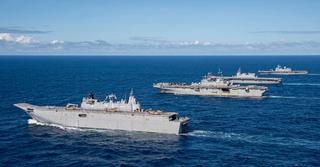
4. Australia and South Korea’s defence industrial and technology cooperation faces stiff headwinds, though promising avenues for collaboration remain.
- Defence industry has figured prominently in Australia-South Korea defence cooperation in recent years, with South Korean firm Hanwha Defence Australia (HDA) establishing a firm presence in Australia after decades of attempting to enter the market. HDA has secured contracts to deliver K9 ‘Huntsman’ self-propelled howitzers and ‘Redback’ infantry fighting vehicles (IFV) to the Australian Army in coming years. Hanwha Ocean and Hyundai Heavy Industries have made competitive, although ultimately unsuccessful, pitches for Australia’s Sea 3000 General Purpose Frigate project, while the former has also pitched a proposal to deliver a fleet of diesel-powered attack submarines to Australia as a bridge between its current and future fleets.
- However, the longer-term prospects for Australia-South Korea defence industry cooperation are uncertain. Some participants highlighted that the Australian Government’s cuts to the howitzer and IFV contracts, the exclusion of both South Korean companies from the final General Purpose Frigate tender, and HDA’s decision not to pursue the acquisition of Australian shipbuilding company Austal all stood to disincentivise further South Korean interest in the Australian defence market. Indeed, there is concern that a lack of ongoing or new business could have a stifling effect on the broader strategic partnership, given the particular importance that Seoul places on defence industry cooperation as a means of building meaningful strategic relationships with other middle powers like Australia.10 However, others argued that the future of the broader bilateral relationship should not be dependent on the outcomes of defence industry contracts, noting that Australia would continue to make capability decisions based primarily on operational requirements and business cases rather than broader strategic alignment dynamics.
A lack of ongoing or new business could have a stifling effect on the broader strategic partnership, given the particular importance that Seoul places on defence industry cooperation as a means of building meaningful strategic relationships with other middle powers like Australia.
- Nevertheless, there remain several pathways to further Australia-South Korea defence industry cooperation in the coming years. Participants on both sides encouraged ongoing discussions regarding South Korea’s potential participation in AUKUS Pillar II, though did not offer concrete details of what this might look like nor what South Korea’s specific interests in working with the partnership might be. Experts also identified the potential for greater MRO cooperation, pointing to recent discussions between US President Donald Trump and ROK President Yoon Suk Yeol on finalising arrangements to repair US ships in Korean shipyards and the potential to include Australia in these efforts. Likewise, others noted that greater South Korean participation in US-Australia alliance activities and initiatives in Australia, including joint exercises and maritime surveillance activities, could create new opportunities for joint maintenance and sustainment of common platforms like the P-8 maritime patrol aircraft.
5. There was no clear consensus regarding whether recent policy changes and international actions taken by the DPRK signal a lasting shift towards a more forthright approach to its regional and global security role. Though certain to negatively impact inter-Korean dynamics, it is less clear how these developments might impact the Indo-Pacific strategic environment or balance of power.
- Participants noted that recent developments herald a significant shift in Pyongyang’s approach to its regional and global strategy. On force posture, North Korea installed suspected anti-tank barriers, destroyed inter-Korean roads and rail lines, planted landmines along the Demilitarized Zone, and deployed nuclear-capable missile launchers near its southern border in 2024.11 More concerningly, in January last year, DPRK leader Kim Jong Un officially abandoned unification as an avowed objective, and announced constitutional reforms that would formally designate South Korea as the “primary foe and invariable principal enemy.”12 Participants noted that North Korea’s abandonment of reunification efforts with South Korea may have been a deliberate effort to pre-empt the August 15 launch of the South Korean Government’s new Unification Doctrine, which includes the allocation and use of dedicated resources to disseminate information to the North Korean population.
- Meanwhile, the DPRK’s growing willingness to pursue a more active role abroad is best demonstrated by its contributions to Russia’s war efforts in Ukraine. Having supplied vast amounts of artillery shells and ammunition to the Russian Army since August 2023, the DPRK strengthened its bilateral relationship with Russia by signing a Treaty of Comprehensive Strategic Partnership (CSP) in June 2024 — the most significant and far-reaching agreement between the two countries in the post-Cold War era. In November 2024, the DPRK deployed approximately 10,000 troops to Russia’s Kursk region to support the Kremlin’s war against Ukraine.13 In exchange, Pyongyang is reportedly receiving energy military aid, including more advanced aircraft, missile, and submarine technologies, as well as the first direct combat training for its deployed forces since the Korean War.14 Some experts suggested that the deployment of the DPRK troops may be part of the DPRK’s Global South outreach effort, with Pyongyang seeking to leverage its military cooperation with the Russian Federation to socialise its new ‘two-country logic’ among sympathetic and/or non-aligned Global South countries. This approach seems to echo the strategies deployed by the two Koreas during the Cold War, where the two states competed for political and diplomatic backing from the wider international community.
- However, there was no clear consensus among participants regarding the extent to which these developments may portend a broader step-change in North Korea’s approach to foreign policy and strategy in the Indo-Pacific. Some participants considered North Korea’s engagement with Russia, including its deployment of troops to Kursk, to be largely opportunistic, questioning the long-term durability of the partnership in the absence of a firm values proposition or positive agenda. However, others suggested that these developments may yet be indicative of a more fundamental change in North Korean foreign policy and its self-perceptions of agency in influencing regional and global strategic situations, with prospects of an enduring Russia-DPRK strategic partnership further complicating inter-Korean dynamics going forward. They expressed concerns that a more empowered and risk-tolerant North Korea could produce unpredictable and unforeseen strategic ripple effects in Northeast Asia and the wider region.
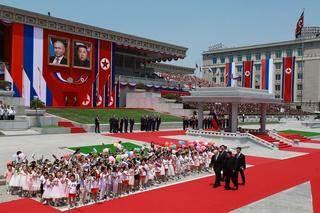
- In either case, Australian and Korean participants alike expressed reservations that these developments could narrow South Korea’s strategic bandwidth and, by extension, limit options for wider regional security cooperation with Australia. Such prospects gain traction in light of Seoul’s relatively recent adoption of the Indo-Pacific as a strategic concept and the Yoon administration’s ongoing efforts to right-size South Korean engagement and participation in the wider region, particularly in Southeast Asia. Beyond that, however, participants suggested it was yet too soon to ascertain the consequences of potential changes in North Korean behaviour on strategic dynamics in Northeast Asia and the Indo-Pacific more broadly.
- Relatedly, it was not clear from these discussions exactly what more Australia can do to further assist South Korea in managing an emboldened North Korea, or to prepare for a higher risk of strategic instability in Northeast Asia. While Australian participants were supportive of the ROK Government’s new Unification Doctrine, it was unclear whether South Korea’s expectations of Australia had or would evolve in line with this policy shift or changing dynamics on the Korean Peninsula, and/or what more Australia could or should do beyond its contributions to the UN Command, maritime and UN sanctions enforcement operations, and spotlighting DPRK human rights abuses. Some participants highlighted Australia’s relative non-engagement with North Korea, noting the absence of Australian officials’ visits to the country since 2016. They argued that Canberra needs to strengthen its humanitarian engagement with the Korean Peninsula as one of the few remaining vectors of ‘influence’ vis-a-vis North Korea.
6. Likewise, though experts speculated over the potential strategic gains and losses that the Russian Federation stood to reap from deeper cooperation with the DPRK, there was no consensus on the strategic implications of that partnership for Australian-ROK cooperation.
- Some analysts characterised the new quasi-alliance arrangements between North Korea and Russia, reflected in the June 2024 CSP, as a development of long-term material, political and strategic significance for Moscow. Korean experts argued that the CSP’s mutual defence obligations — to provide “military and other assistance” to “an armed invasion from an individual state or several states” — now borne by Moscow reflect the Russian Federation’s commitment to securing victory in Ukraine ‘at all costs’ rather than the Kremlin’s Indo-Pacific strategic ambitions, with the agreement’s potential future political and strategic costs a price worth paying for North Korea’s near-term material support.
Analysts characterised the new quasi-alliance arrangements between North Korea and Russia, reflected in the June 2024 Comprehensive Strategic Partnership, as a development of long-term material, political and strategic significance for Moscow.
- Others still contended that Russian elites view the partnership as more than necessary opportunism. They suggested that Moscow has grander designs to empower North Korea as a viable long-term strategic partner by assisting in its development of instruments of comprehensive national power beyond the ‘nuclear issue’. This would complicate US-led efforts to create a “latticework” of defence relationships — including with Australia and South Korea — in the Indo-Pacific, placing resourcing pressures on Washington by redirecting military aid to Eastern Europe. It would also foster the DPRK’s capacity to ‘gatekeep’ Northeast Asian approaches for Russia’s Arctic maritime trade routes and to play a more general ‘disruptor’ role in local regional geopolitical and geostrategic dynamics.
- Finally, experts explored the significant risks of deepened military cooperation with the DPRK for the Russian Federation. For instance, attendees reported that surveys of discussions among Russian elites have indicated a degree of anxiety that the DPRK could seek to reverse-engineer newly acquired Russian technology in the interests of bolstering North Korea’s capacity to sell arms to a wider global market — a “cheap betrayal” which would put it in direct competition with Moscow in an area essential to Russia’s long-term global influence and economic prosperity. There are also concerns that empowering North Korea will prompt the United States and its network of allies to further strengthen their military posture in Northeast Asia to the detriment of the Russian Pacific Fleet and Air Force’s room for action, and/or that an empowered North Korea may choose to engage in provocations that could ultimately sap Russian attention and resources.
7. Experts agreed that maritime Southeast Asia provides a natural theatre for South Korea and Australia to further their defence and security cooperation.
- Southeast Asia is a natural geographic midpoint between Seoul’s core interests in Northeast Asia and Australia’s in the South Pacific; a major commercial shipping thoroughfare of vital importance to both countries; a region of distinct geopolitical and geoeconomic significance in its own right, and a key theatre of strategic competition across all domains and vectors of national power. Yet these shared interests have rarely been identified as a major driver for enhanced Australia-South Korea defence engagement, with North Korea’s military programs operating as the primary, if not sole, object of such cooperation for much of the duration of the strategic partnership.
- However, participants from both countries emphasised that the centrality of Southeast Asia to South Korea’s 2022 Indo-Pacific Strategy and Australia’s 2024 National Defence Strategy — including concerning maritime defence and security — have created new opportunities for the two countries to realise more impactful collaboration in the region. These views were underscored in the May 2024 2+2 Joint Statement, where the two countries agreed to expand their cooperation, “bilaterally and with regional partners and institutions”, across the Indo-Pacific, particularly in Southeast Asia.15
- Participants pointed to a range of options for Australia and South Korea to advance their cooperation. Firstly, experts from both countries agreed that non-traditional security issues offer a valuable opportunity for South Korea and Australia to strengthen their relationship with Southeast Asian countries while addressing a broad spectrum of ‘high’ level conventional defence challenges and ‘low’ level political-security issues, including counter-piracy, illegal fishing and humanitarian aid and disaster relief. Some experts proposed that addressing both traditional and non-traditional security threats in tandem, rather than explicitly dividing them, could help mitigate both countries’ policymakers’ and defence officials’ tendency to prioritise traditional security issues, thereby sustaining and fostering greater collaboration in often-under looked security issues valued by Australia and the ROK’s Southeast Asian partners.
- Australian experts also suggested that their country could assist in ‘socialising’ a more regular ROK naval and coast guard presence in Southeast Asia, including through providing logistical support and access locations close to the region, building the South Korean Navy into Australian and US-Australia force posture initiatives and activities (including on maritime surveillance), and encouraging and supporting the development of an annual ROK Navy regional presence mission akin to Australia’s Indo-Pacific Endeavour. These experts suggested that greater clarification from their South Korean colleagues on the precise role that South Korea saw for its Navy and Coast Guard in implementing its regional strategy would help Australia to calibrate its assistance to and engagement with South Korea.
- Participants also stressed that seeking opportunities for greater coordination, rather than simply cooperation, may provide more productive avenues for giving greater expression to bilateral defence cooperation in the short term. Regional capacity-building emerged as a primary activity for such coordination, with experts highlighting the need for Australia and South Korea to avoid needless overlap or duplication in delivering capacity-building programs for regional partners, both for their resourcing requirements but also given the often limited ability of recipient states to absorb large amounts of aid — noting the 2009 MoU on Development Cooperation between Australia and ROK.16 Such coordination could be expanded out to other countries engaging in similar efforts, such as India, Japan and the United States. Relatedly, participants praised South Korea’s growing arms sales to key Southeast Asian partners but also suggested that Japan’s strategic use of official development assistance (ODA) and official security assistance (OSA) offered critical insights, and possibly a model, for how Australia and South Korea could further strengthen their engagement with priority regional partners to maximise the strategic payoffs of such initiatives for both countries.
8. Both Australia and South Korea remain uncertain about how the return of Donald Trump as President of the United States will affect their respective alliances and regional security more broadly but agree on the need for their two countries to work together more closely on defence and security issues than ever before.
- Both countries are equally uncertain about how President Trump, backed by a strong popular mandate and Republican control of Congress, will approach key issues within their respective alliances — but for quite different reasons. For Australia, securing the Trump administration’s commitment to delivering AUKUS Pillars I and II looms as the largest source of anxiety, though many participants expressed confidence that Washington would stay the course given the force posture and industrial benefits that it stands to accrue from the arrangement. For South Korea, Trump’s previous efforts in his first term to quintuple Seoul’s contributions to force posture cost-sharing arrangements, threats to fully withdraw US forces from the Korean Peninsula, and his willingness to negotiate with Kim Jong-un raise deeper, more uncomfortable questions about short- and long-term stability on the Korean Peninsula, the effectiveness of extended deterrence vis-a-vis North Korea, and the future trajectory of the US-ROK alliance.
- Participants from both countries also expressed uncertainty about whether a second Trump presidency will produce greater or lesser regional stability. On the one hand, some participants noted that Trump’s embrace of Schelling’s ‘madman theory’ coupled with a transactional ‘dealmaking’ approach to diplomacy and a willingness to ‘escalate to deescalate’, may produce greater regional stability in the short-term if this prompts more restraint among allies and adversaries alike.17 On the other hand, some worried that a more confrontational US approach to China, especially with respect to regional military and grey-zone flashpoints, may increase the risks of miscalculation and conflict. This risk is heightened if adversaries seek to call Trump’s bluff and/or if allies feel compelled to assume more muscular military postures to offset uncertainties over US commitments, including prospects for nuclear breakout among several Northeast Asian partners.
Experts from both countries underscored the need for Australia and South Korea to strengthen their coordinated efforts to shape US regional strategy, noting that a total US retrenchment from Asia remains highly unlikely.
- In both cases, Australia and South Korea have deep interests in ensuring that the worst of these possibilities in both alliances do not come to pass. To do so, experts from both countries underscored the need for Australia and South Korea to strengthen their coordinated — though not identical — efforts to shape US regional strategy, noting that a total US retrenchment from Asia remains highly unlikely. Participants agreed that while both countries would remain strongly committed to their respective alliances with the United States, Australia and South Korea will need to pursue even closer cooperation and exercise their agency to shape the regional strategic landscape amid intensifying geopolitical competition and question marks over the precise nature and scope of US engagement in coming years. To respond to those uncertainties, experts suggested that Australia and South Korea should capitalise on the momentum generated by the Biden administration’s, as well as their own, recent efforts to better network regional alliances and partnerships — including through more frequent high-level consultations and the sharing of strategic assessments.
9. Amid the deteriorating regional strategic environment and China and North Korea’s growing conventional and nuclear capabilities, Australia and South Korea are being forced to confront difficult and unique questions over the future of US extended nuclear deterrence in Asia.
- While US nuclear deterrence and/or growing discussions among some communities in South Korea over the viability of an independent nuclear weapons capability received little dedicated discussion, the dialogue raised several questions for both countries concerning issues of US extended deterrence. Australian participants noted that discussions on such issues within the US alliance and in the public sphere alike, including on Australia’s role in upholding a credible US nuclear posture, are rather underdeveloped. In contrast, they pointed to the comparatively robust official and public dialogues on these same issues in the US-South Korea alliance context and called for these to be replicated as part of regular US-Australia engagements.
- South Korea, on the other hand, faces different questions regarding extended deterrence and alliance credibility. Participants noted a significant uptick in discussions on both the left and right of South Korean politics about the perceived need to entertain the idea of an indigenous nuclear deterrent for South Korea. This comes despite recent US efforts to improve the credibility of its extended deterrence guarantees to Seoul, most notably in the 2023 Washington Declaration’s establishment of a Nuclear Consultive Group (NCG) and assurance that the United States will “make every effort to consult with the ROK on any possible nuclear weapons employment on the Korean Peninsula.”18 Experts noted that though the risks of nuclear breakout remained extremely remote. Instead, any translation of discussions to acquire an indigenous nuclear capability into actual policy would have serious implications for the Australia-South Korea bilateral relationship, given Australia’s long history of anti-nuclear activism, its commitment to international non-proliferation treaties and safeguards protections associated with its uranium exports — let alone for the US-ROK alliance and broader regional stability, including the prospect of Japan or Taiwan considering similar nuclear empowerment options.
- Participants from both countries agreed that as the strategic environment in the Indo-Pacific becomes increasingly volatile and as US-led alliances become more networked and mutually reinforcing, it will likely become necessary for Washington and its allies to engage in broader multilateral extended deterrence dialogues. Experts from both countries agreed that such a forum — whether Track 1 or 1.5 — would provide a valuable means for comparing strategic assessments and extended deterrence requirements, testing assumptions about one another’s risk thresholds, and sharing lessons and best practices for marshalling well-informed, sensible debate over extended deterrence issues in both official and public settings.
The Australia-Republic of Korea Dialogue on Security Cooperation and subsequent outcomes report were both supported by the Republic of Korea Ministry of Foreign Affairs.
